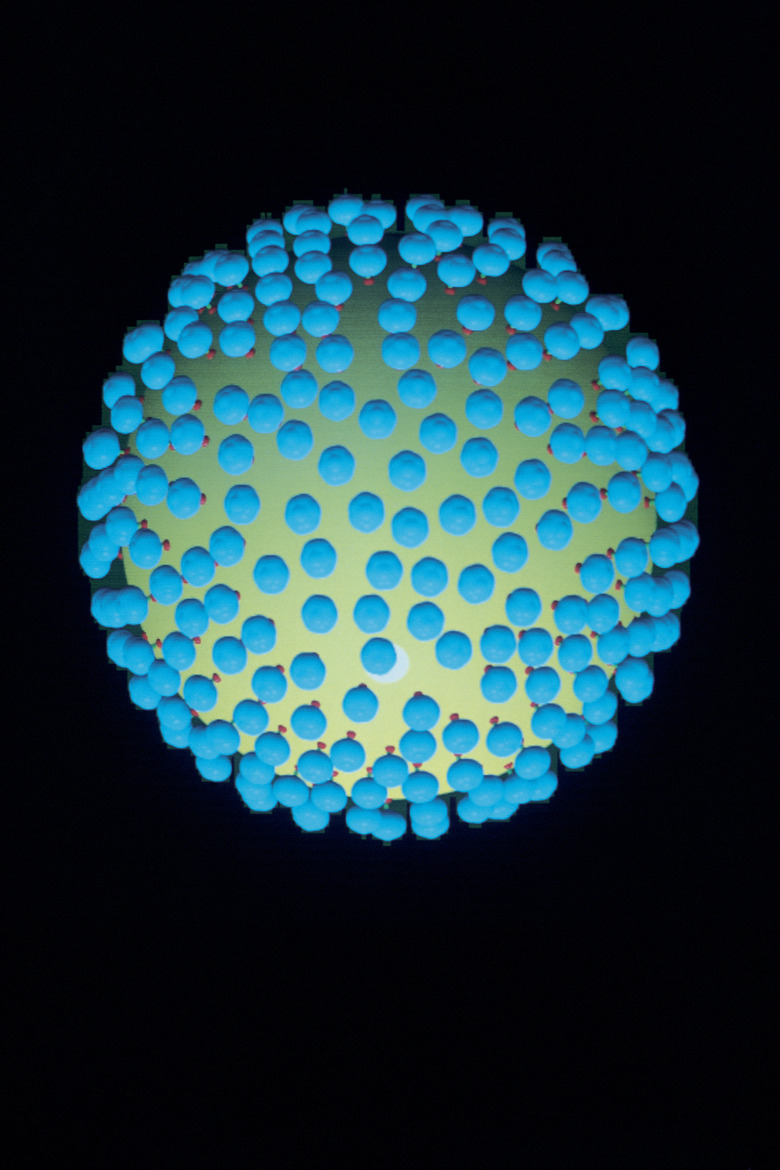Retrovirus Vs. DNA Virus
A virus is a minuscule organism that is present practically everywhere on earth. Viruses can infect animals, plants, fungi and bacteria. Some of them can go virtually undetected, while others can cause fatal diseases. While there is no cure for any virus, a vaccination can prevent them.
Retrovirus vs. Virus
Retrovirus vs. Virus
A viruses is a nucleic acid made up of genetic material (RNA or DNA) and coated in a protein. Because viruses don't have cells of their own, they need to invade a host cell to reproduce. This normally destroys the host cell and causes disease. A retrovirus is a particular type of virus that uses RNA (ribonucleic acid) as its genetic material, and this is the key element of the retrovirus definition. Retroviruses do not kill the host cell at first because they can insert their genome into the host genome. This process is called reverse transcription and is done by the viral protein reverse transcriptase.
Retrovirus vs. DNA Virus
Retrovirus vs. DNA Virus
A DNA virus is a virus in which the genetic information is stored in the form of DNA (deoxyribonucleic acid). It replicates using a DNA-dependent DNA polymerase. The nucleic acid is usually double-stranded DNA (dsDNA) but may also be single-stranded DNA (ssDNA). Examples of DNA viruses are the herpes simplex virus and the poxvirus.
Retroviruses use their RNA and a special enzyme called reverse transcriptase to create DNA, which then specifies RNA, which in turn creates proteins. The retrovirus then integrates its viral DNA into the DNA of the host cell, which enables replication of the retrovirus. The extra step makes retroviruses more prone to mutation than most viruses, causes them to evolve more quickly than other viruses. This process makes the HIV retrovirus, the best-known human retroviral disease that causes AIDS, very resistant to treatment. Other examples of retroviruses are human T-lymphotropic virus type 1 (HTLV-1) and human T-lymphotropic virus type 2 (HTLV-II), which are both transmitted between people through sexual contact, infected blood or tissue exposure, or during pregnancy or childbirth from an infected mother to her child.
Vaccinating Against Viruses
Vaccinating Against Viruses
Many vaccines exist to protect against retroviruses and DNA viruses. Two types of vaccines are live-attenuated vaccines and inactivated vaccines.
Live-attenuated vaccines use a weakened form of the germ that causes a disease to provide long-lasting protection from a single dose. The MMR vaccine is used to protect against measles, mumps and rubella. Live vaccines are also available for rotavirus, smallpox, yellow fever and chickenpox.
Inactivated vaccines use a killed version of the germ that causes a disease, which means they offer less protection than a live vaccine and several doses over time are required. Inactivated vaccines are available for flu, polio, rabies and hepatitis A.
Cite This Article
MLA
Gillespie, Claire. "Retrovirus Vs. DNA Virus" sciencing.com, https://www.sciencing.com/retrovirus-vs-dna-virus-4588/. 19 August 2018.
APA
Gillespie, Claire. (2018, August 19). Retrovirus Vs. DNA Virus. sciencing.com. Retrieved from https://www.sciencing.com/retrovirus-vs-dna-virus-4588/
Chicago
Gillespie, Claire. Retrovirus Vs. DNA Virus last modified August 30, 2022. https://www.sciencing.com/retrovirus-vs-dna-virus-4588/
